#MEMOIRS OF AN INVISIBLE MAN (1992)
Text
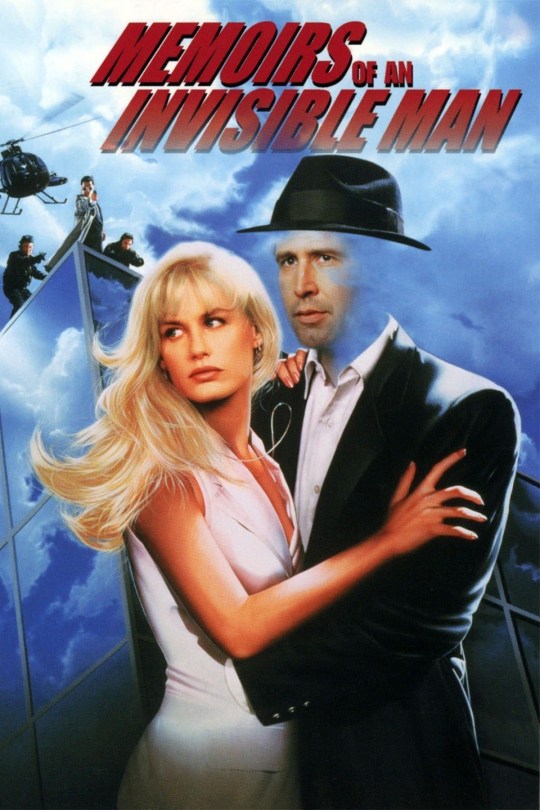

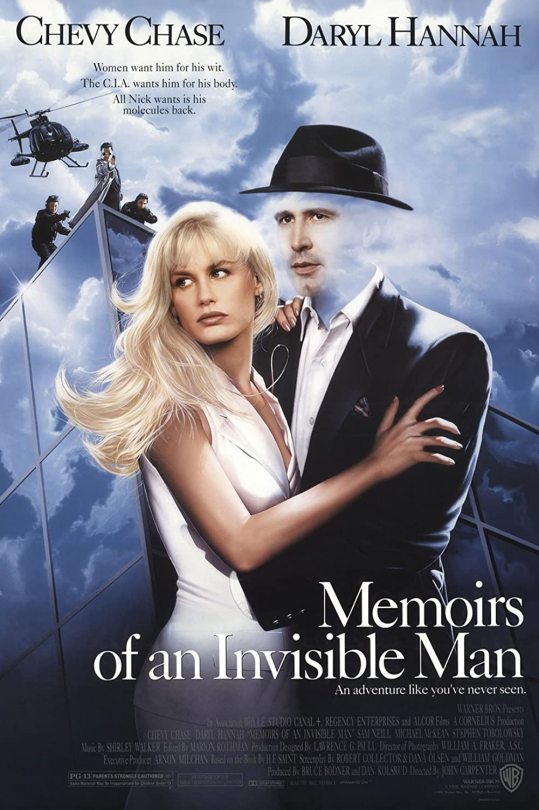
W A T C H I N G
#MEMOIRS OF AN INVISIBLE MAN (1992)#JOHN CARPENTER#CHEVY CHASE#DARYL HANNAH#SAM NEILL#Michael McKean#Stephen Tobolowsky#Jim Norton#Paul Perri#Richard Epcar#Steven Barr#Gregory Paul Martin#Patricia Heaton#Rosalind Chao#SCI-FI#INVISIBLE MAN#COMEDY#DRAMA#Science Fiction#WATCHING#movies based on books#book adaptation
5 notes
·
View notes
Text
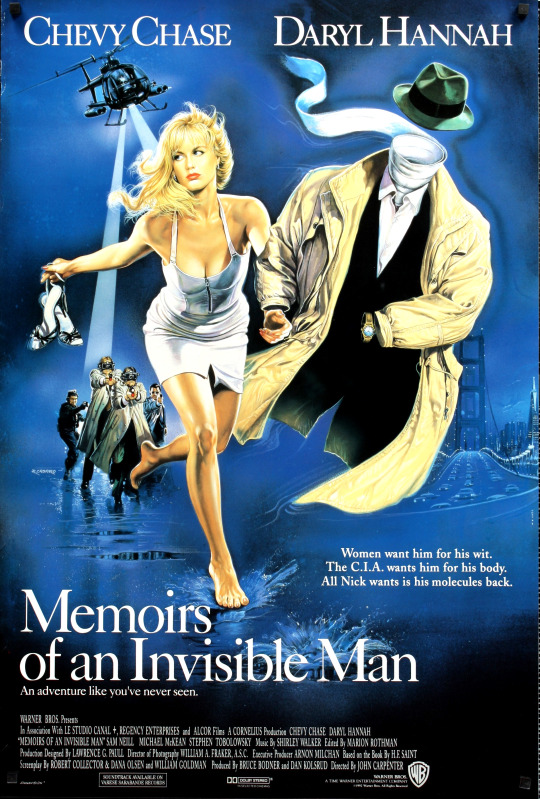
"MEMOIRS OF AN INVISIBLE MAN" (1992) Dir.: John Carpener - Póster inglés / UK poster - Art by Renato Casaro
12 notes
·
View notes
Text


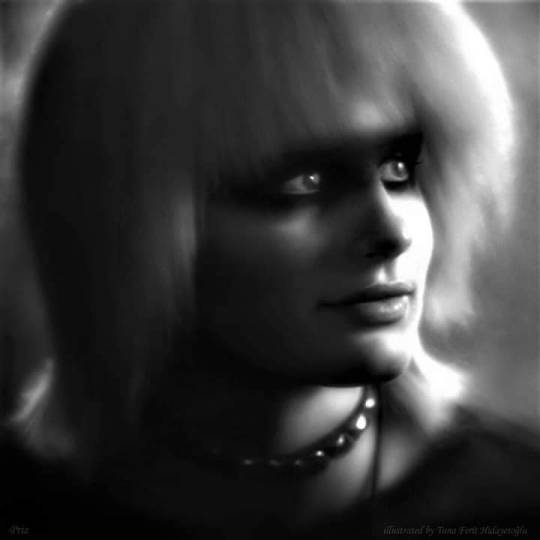

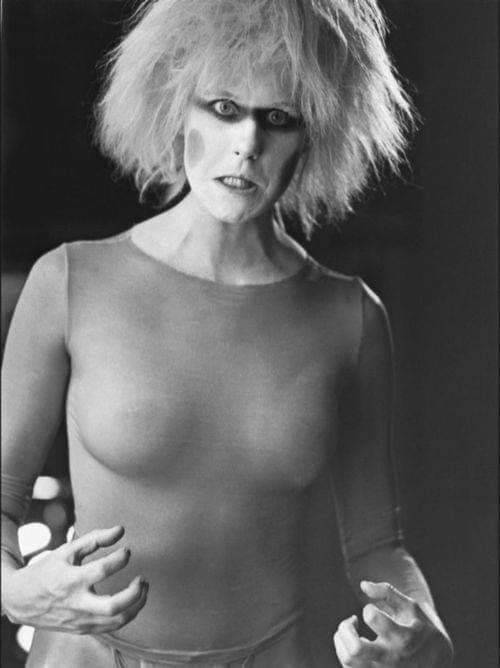





Daryl Hannah , nació en Chicago, Illinois el 3 de diciembre de 1960.
Es una actriz estadounidense que
saltó a la fama tras aparecer en la cinta de ciencia ficción, Blade Runner (Ridley Scott, 1982), donde da vida a la replicante Pris.
Ha sido estrella en numerosas producciones de Hollywood durante los años 1980.
En 1992 dio vida a Alice Monroe en Memoirs of an Invisible Man, la película de ciencia ficción dirigida por John Carpenter, basada en la novela homónima escrita por H. F. Saint.
Sus protagonistas principales son Chevy Chase, Daryl Hanna y Sam Neill , y en 1993 participó como la mujer gigante, en Attack of 50 ft. Woman, remake de la película de ciencia ficción de culto, de los años 50.
3 notes
·
View notes
Text
One of my favorite directors from my childhood is John Carpenter. I was the perfect age of 9, 10 & 11 when "The Fog," “Escape from New York,” and “The Thing” came out. My friends and I loved them. We would act them out and make up games based on the movies.
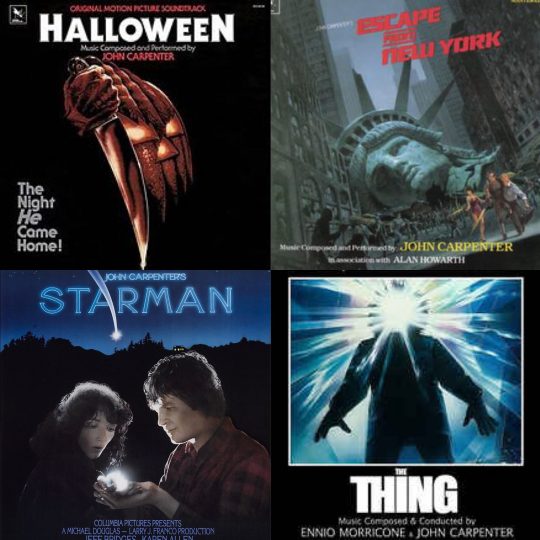
Back in 2020 during the quarantine, I spent a month re-watching all of the John Carpenter movies I could get my hands on. I then ranked them from the best to worst:
Halloween (1978)
The Thing (1982)
Escape from New York (1981)
Starman (1984)
They Live (1988)
The Fog (1980)
Christine (1983)
Assault on Precinct 13 (1976)
Village of the Damned (1995)
Prince of Darkness (1987)
In the Mouth of Madness (1995)
Ghosts of Mars (2001)
Memoirs of an Invisible Man (1992)
The Ward (2010)
Big Trouble in Little China (1986)
Escape from LA (1996)
Vampires (1998)
Dark Star (1974)
1 note
·
View note
Text
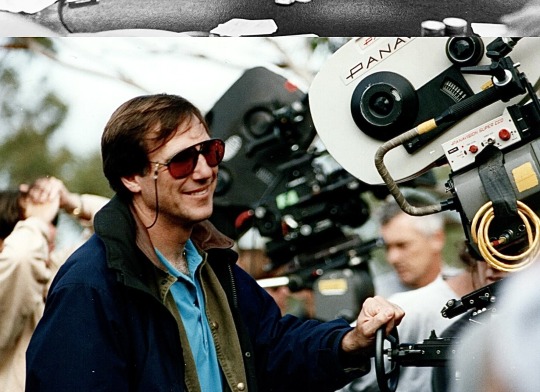
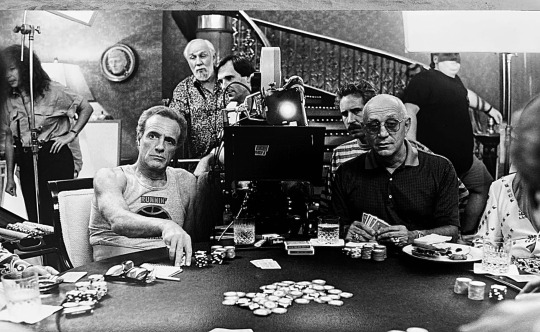

The onetime SOC president collaborated with cinematographer William Fraker on 17 films, including ‘Tombstone,’ ‘Honeymoon in Vegas’ and ‘Town & Country.’
BY MIKE BARNES
David E. Diano, a veteran camera operator with credits including Tombstone, The Fast and the Furious, Wedding Crashers and Spider-Man 3, has died. He was 71.
Diano died Jan. 22 at Huntington Hospital in Pasadena of coronary issues after a battle with prostate cancer, his wife, still photographer Gemma LaMana, told The Hollywood Reporter.
Diano served as president of the Society of Camera Operators from 2003-04 before deciding not to run for a second term.
“To write that David was a one-of-a-kind friend to those of us who worked with him would be an understatement,” SOC historical chair Michael Frediani said in a statement. “His kindness, artistry and boyish smile endeared him to countess friends and fellow industry colleagues — and that is what set him apart from many,”
Diano shot 17 movies for cinematographer William Fraker, a six-time Oscar nominee, from 1983-2002. Those films included War Games (1983), Murphy’s Romance (1985), Baby Boom (1987), Memoirs of an Invisible Man (1992), Honeymoon in Vegas (1992), Tombstone (1993), Father of the Bride Part II (1995), Town & Country (2001) and Waking Up in Reno (2002).
A native of Los Angeles, David Edward Diano graduated from Eagle Rock High School and UCLA before working as a camera operator on the 1980 releases How to Beat the High Cost of Living and The Formula.
He went on to work on such other features as Night Shift (1982), Leap of Faith (1992), Angels in the Outfield (1994), 2 Days in the Valley (1996), The Fast and the Furious (2001), Charlie’s Angels: Full Throttle (2003), National Treasure (2004), Wedding Crashers (2005), Spider-Man 3 (2007), You Don’t Mess With the Zohan (2008) and Little Fockers (2010).
Diano also manned a camera on the TV series Bones in 2013-15 and Bosch in 2015.
In addition to his wife — they were married in 1991, and she received a lifetime achievement honor from the SOC in 2001 — survivors include his sons, David and Sean.
0 notes
Photo
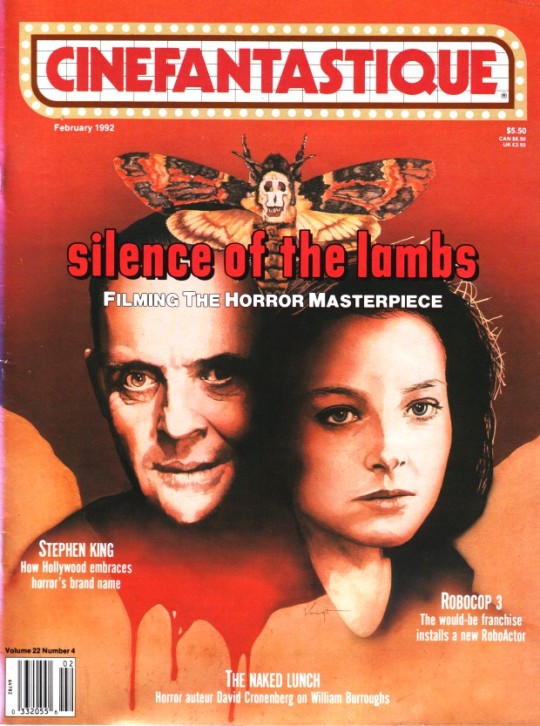
Cinefantastique #87
Feb 1992
This issue includes the following: a piece on Stephen King's latest Hollywood projects; previews of Robocop 3, Memoirs of an Invisible Man, and Freejack; an interview with David Cronenberg; articles on Beauty and the Beast and Freddy Krueger; the making of Silence of the Lambs; William Shatner on the making of Star Trek VI; reviews of Freddy's Dead and Dead Again; and more. Silence of the Lambs cover painting
1 note
·
View note
Text
Memoirs Of An Invisible Man (1992)
Memoirs Of An Invisible Man by #JohnCarpenter starring #ChevyChase and #DarylHannah, "It’s a shame the film isn’t better considering that it has a lot of great elements being thrown into the mix",
JOHN CARPENTER
Bil’s rating (out of 5): BBB.5
USA/France, 1992. Warner Bros., Canal+, New Regency Productions, Alcor Films, Cornelius Productions. Screenplay by Robert Collector, Dana Olsen, William Goldman, based on the book H.F. Saint. Cinematography by William A. Fraker. Produced by Bruce Bodner, Dan Kolsrud. Music by Shirley Walker. Production Design by Lawrence G. Paull. Costume Design by…

View On WordPress
#Aaron Lustig#Alcor Films#Barry Kivel#Bruce Bodner#Canal+#Chevy Chase#Chip Heller#Cornelius Productions#Dan Kolsrud#Dana Olsen#Daryl Hannah#Donald Li#Edmund L. Shaff#Elaine Corral Kendall#Ellen Albertini Dow#France#Gregory Paul Martin#H.F. Saint#I.M. Hobson#Jay Gerber#Jim Norton#Joe I. Tompkins#John Carpenter#Jonathan Wigan#Lawrence G. Paull#Marion Rothman#Michael McKean#New Regency Productions#Pat Skipper#Patricia Heaton
0 notes
Photo

Memoirs of an Invisible Man - John Carpenter (1992)
Poster
#memoirs of an invisible man#invisible man#poster#john carpenter#fantasy#science fiction#scam 1992#1990s#daryl hannah#chevy chase#h.f. saint#sam neill#stephen tobolowsky#warner bros#regency enterprises
11 notes
·
View notes
Text
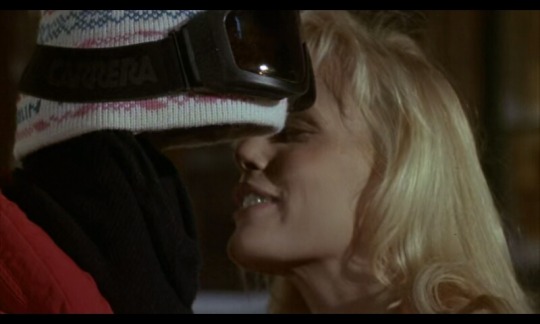
Memórias de um Homem Invisível (Memoirs of an Invisible Man), 1992
#Memórias de um Homem Invisível#Memoirs of an Invisible Man#chevy chase#daryl hannah#sam neill#comédia#romance#comedy#ficção científica#scifi#filmes#movies#1992#john carpenter
5 notes
·
View notes
Photo

Memoirs of an Invisible Man (John Carpenter, 1992)
19 notes
·
View notes
Photo

Avventure di un uomo invisibile (1992) ☰
#avventure di un uomo invisibile#Memoirs of an Invisible Man#John Carpenter#commedia#fantascienza#comedy#sci-fi#Chevy Chase#Daryl Hannah#Sam Neill#Michael McKean#1992#Stephen Tobolowsky#Patricia Heaton#film da vedere#da vedere#movie to see#to see
2 notes
·
View notes
Link
#chevy chase#daryl hannah#john carpenter#invisible man#leigh whannell#1992#2020#memoirs#horror#comedy#sci-fi#science fiction#funny#thriller#mystery#noir#detective
0 notes
Photo
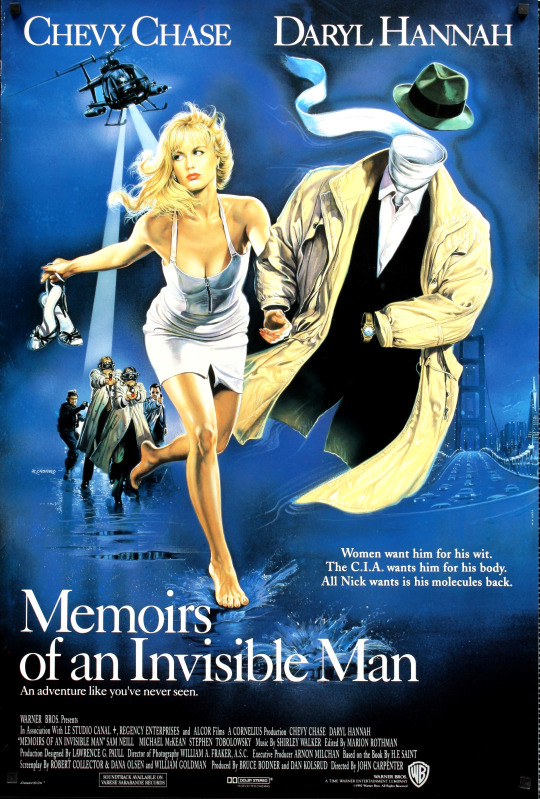
“MEMOIRS OF AN INVISIBLE MAN” (1992) Dir.: John Carpenter - Poster illustrated by Renato Casaro
21 notes
·
View notes
Text
MEMOIRS OF AN INVISIBLE MAN- 1992 ⭐⭐⭐
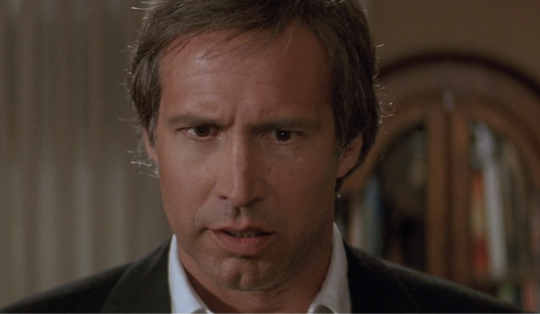
After being in the wrong place at the wrong time, Nick Halloway (Chevy Chase) is hit by a nuclear experiment gone wrong, and turns completely invisible.
He is desperate to get his life back but the scientists dont seem to know how. He is also being pursued by a rogue C.I.A agent played by Sam Neill.
Originally going to be directed by Ivan Reitman who had constant arguments with Chevy Chase, the studio chose Chase and Reitman was fired.
His replacement was legendary horror/sci fi director John Carpenter. Despite the fact that Carpenters best work was behind him by this point, this should have been a perfect fit, but Carpenter had the same issues with Chevy Chase who he described as:
" a directors worst nightmare"
Chase would often ruin takes by taking off his makeup and prosthetics to early and ruining scenes.
John Carpenter has said this is his least favourite of all of his movies. Due to dealing with problematic actors and constant interference from the studio over the tone of the movie.
Despite all this its still definetly a lot better than Ghosts of Mars.
While not a great movie i did find it pretty interesting and not a bad watch overall.
5 notes
·
View notes
Photo

Batman: Mask of the Phantasm (1993)
In American animation outside of Disney, no other studio inspires as much reverence as Warner Bros. The Merrie Melodies and Looney Tunes shorts precipitated into worldwide recognition for those series’ stock characters. Despite this success, Warner Bros. did not release an animated feature until the musical Gay Purr-ee (1962), in association with United Productions of America (UPA). Animators at Warner Bros. from the 1930-1960s knew they were not making high art, nor were they pretending to. Warners, since the 1930s arguably the most financially stable of the major Hollywood studios, has historically seen little need to bankroll animated features. With that in mind, it might come as less of a shock that Warner Bros.’ first in-house animated feature is Eric Radomski and Bruce Timm’s Batman: Mask of the Phantasm. Originally intended as a direct-to-home media release, Mask of the Phantasm – based on and made by the production team behind Batman: The Animated Series (1992-1995) – transcends those modest intentions. It is among of the best superhero films ever made.
In the wake of Tim Burton’s Batman (1989) and Batman Returns (1992), Batman: The Animated Series, unlike Burton’s efforts, affords time to characterize Bruce Wayne rather than surrendering ample screentime to thinly-written but scene-stealing villains. For that and many other reasons including the looming, vertical art deco-inspired production design of Gotham City; the distinctive and moodiness of its black paper backgrounds; and its balance of dark and lighter tones, BTAS remains a high-water mark among Batman fans – perhaps the best adaptation of the character there is. Mask of the Phantasm builds upon that foundation, in addition to crafting its own unique contribution within the DC Animated Universe (DCAU). As tired as origin stories are, Mask of the Phantasm is part-origin story for the Dark Knight – something largely avoided in BTAS – and somehow integrated here without distracting from the present-day scenes. Rarely is any Batman media a character study of Bruce Wayne, but Mask of the Phantasm proves itself a wonderful exception.
One evening, Batman/Bruce Wayne (Kevin Conroy) attempts to stop a gaggle of gangsters led by Chuckie Sol (Dick Miller) from laundering counterfeit money from a casino. Amid the scrum, Sol escapes from Batman, but immediately confronts a shadowy figure later known as the “Phantasm” in the parking garage – Sol dies in the confrontation. Batman receives the blame for the killing and the concurrent property destruction from Gotham City Councilman Arthur Reeves (Hart Bochner), who just so happened to be profiting from Sol’s racket. Across the film, Bruce reminisces about his courtship with Andrea Beaumont (Dana Delany), their breakup, and the lead-up to the creation of his Batman alter-ego. Juxtaposing Bruce’s past and present, we see how he channels his regrets and profound loss into being Batman. The past haunts him still, overhanging the high roofs of Wayne Manor and the ledges of Gotham’s skyscrapers. Back in the present day, the Phantasm has murdered another crime boss; a third murder involves the Joker (Mark Hamill), initiating an emotional dénouement that, because of the intricacies of motivation that the film develops, elevates the film beyond what might otherwise be sloppy storytelling.
The dramatis personae also includes crime boss Salvatore “The Wheezer” Valestra (Abe Vigoda); Andrea’s father, Carl Beaumont (Stacy Keach); the Wayne family butler, Alfred Pennyworth (Efrem Zimbalist Jr.); GCPD Commissioner James Gordon (Bob Hastings); and GCPD Det. Harvey Bullock (Robert Costanzo).
The screenplay by Alan Burnett (producer and writer on various DC Comics films and Hanna-Barbera productions), Paul Dini (head writer on BTAS and Superman: The Animated Series), Martin Pasko (a longtime DC Comics writer), and Michael Reaves (head writer on BTAS and 1994-1996’s Gargoyles) keep the film’s attention on Batman/Bruce Wayne, despite the introduction of various subplots and Joker – whose somewhat-questionable presence might seem to indicate a project going off the rails. Shadow of the Phantasm’s placement of flashbacks stems the awkwardness that Joker’s inclusion brings, assuring that the film stays grounded into Batman’s psychology. In past Bruce we see a charming young man with time, money, and looks to spare. His romantic side with Andrea is an element of his life, one that connects – inevitably, tangentially – to the trauma his parents’ murder. His most personal motivations – that which a younger Andrea could never see, and privy to only Alfred – are stuck in the past, circulating around that childhood loss.
The occasional reflections from Bruce Wayne on what his life has become make Mask of the Phantasm the most introspective piece within the BTAS continuity, freed from the constraints and expectations inherent of episodic television. No BTAS episode forces its eponymous character to confront himself to such extents. What Bruce Wayne and Batman have become in the present-day treads perilously close not to his style of vigilante corrective justice, but vengeance. The tragic paradox that lies at the heart of this tension is the soul of the Batman mythos. Anyone with the most basic understanding of who Bruce Wayne/Batman and the Joker are will at least have a glimmer of understanding of that paradox. This portrait of what Batman stands for is more maturely handled than any of the twentieth century live-action Batman films, and with less sensational filmmaking than Christopher Nolan and Zack Snyder could produce. But with the film’s screenplay and Kevin Conroy’s iconic voice acting as the Caped Crusader, it becomes an inquest into Bruce Wayne’s tortured soul.
If Mask of the Phantasm ran longer than its seventy-eight-minute runtime, Andrea Beaumont, too, might also have received similar character development as Bruce Wayne here. Even within those seventy-eight minutes, Andrea – with a great assist from Dana Delany’s voice acting (Delany so impressed Bruce Timm here that she was given the role of Lois Lane in Superman: The Animated Series) – is a nevertheless fascinating character. In a cruel irony, her ultimate role in Mask of the Phantasm is to be an incidental mirror to the violence that occurs in this film. Her decision is not an imposition, whether conscious or unconscious, from someone else, but hers and hers alone.
In this drama fit for opera, this Batman occupies a world of operatic proportions. The background and character animation are not as pristine as the best examples of BTAS due to some scattered bits of animation outsourcing. The animation of BTAS might seem stiff and janky to modern viewers expecting Flash hand-drawn animation or hand-drawn/CGI hybrids. However, Mask of the Phantasm retains the gravity-defying art deco of the animated series that somehow does not clash with the ‘90s-influenced and futuristic elements it integrates. Its primary inspirations are of film noir and the Metropolis seen in the Fleischer Studios’ Superman series of short films (1941-1943). The black paper backgrounds provide Gotham’s street corners and rooftops a nocturnal menace, immersing the viewer into the city’s seediness.
Composer Shirley Walker (orchestrator on 1979’s The Black Stallion, conductor and orchestrator on 1989’s Batman) was one of the few women composers in Hollywood at the turn of the twentieth into the twenty-first century. A pianist (she played with the San Francisco Symphony as a soloist while still in high school) who studied music composition at San Francisco State University, Walker would later become one of the first female film score composers to receive a solo credit for composing the music in John Carpenter’s Memoirs of an Invisible Man (1992). But it is her work in the DCAU that distinguishes her – of particular note is her arrangement of Danny Elfman’s theme to 1989’s Batman for BTAS and a wholly original main theme for Superman: The Animated Series. Though Walker could adjust her style to suit a more synthetic sound, she specialized in composing grand orchestral cues. That style was apparent in BTAS and is adapted here from the opening titles (the lyrics here are actually gibberish and are the names of Walker’s music department sung backwards). The foreboding brass and string unison lines seem to reverberate off the animation’s skyscraper-filled backgrounds. Numerous passages in Walker’s score, as if taking hints from Richard Wagner, elect not to resolve to the tonic – setting up scenes where tension escalates alongside the music, forestalling the dramatic and musical release.
youtube
One stunning exception to Walker’s ominous, atmospheric score is the gentle cue “First Love”, an interplay between solo oboe and synthesizer. Bruce’s flashbacks are not only a balm to the grimness of his present situation, but a musical reprieve from the intensity of the action scoring. That Walker can navigate between such differing moods exemplifies her compositional dexterity and overall musical excellence. Walker, who cited Mask of the Phantasm as her personal favorite composition for any film or television production, was one of the DCAU’s greatest under-heralded contributors. And how I wish she was given more chances to score different sorts of films.
Warner Bros.’ last-minute reversal on Mask of the Phantasm’s release strategy – abandoning the direct-to-home media debut for a theatrical release – meant minimal marketing for a low-budget film that made barely a dent at the box office. The film’s home media release would more than make up for the film’s theatrical release failure. Upon the success of BTAS and the critical acclaim lavished on Mask of the Phantasm, Warner Bros. kept the DCAU on television for another thirteen years, with infrequent direct-to-home media movie releases as recent as 2019.
For numerous DC Comics fans, the DCAU is an aesthetic and narrative touchstone. The limited animation is sublime for this period in animation history. In addition, one will overhear fans remaking that a certain superhero’s definitive portrayal might be thanks to the DCAU. The superhero benefitting the most from the DCAU’s characterization and storytelling is unquestionably Batman. And justifiably so, as Mask of the Phantasm shows due respect for Batman and Bruce Wayne – what molded them and how each persona intertwines with the other. The mythos behind any superhero is found not in fight scenes. Instead, it resides in the psychology and rationalizations that forces a person to directly confront another’s wickedness. Mask of the Phantasm realizes that such confrontations test Batman/Bruce Wayne’s remaining vestiges of humanity, and braves to ask moral questions that too many figures of superhero media would rather not think about.
My rating: 8.5/10
^ Based on my personal imdb rating. My interpretation of that ratings system can be found in the “Ratings system” page on my blog (as of July 1, 2020, tumblr is not permitting certain posts with links to appear on tag pages, so I cannot provide the URL).
For more of my reviews tagged “My Movie Odyssey”, check out the tag of the same name on my blog.
#Batman#Batman: Mask of the Phantasm#Bruce Timm#Eric Radomski#DCAU#Kevin Conroy#Dana Delany#Hart Bochner#Stacy Keach#Abe Vigoda#Dick Miller#Efrem Zimbalist Jr.#Bob Hastings#Robert Costanzo#Mark Hamill#Shirley Walker#Glen Murakami#My Movie Odyssey
16 notes
·
View notes
